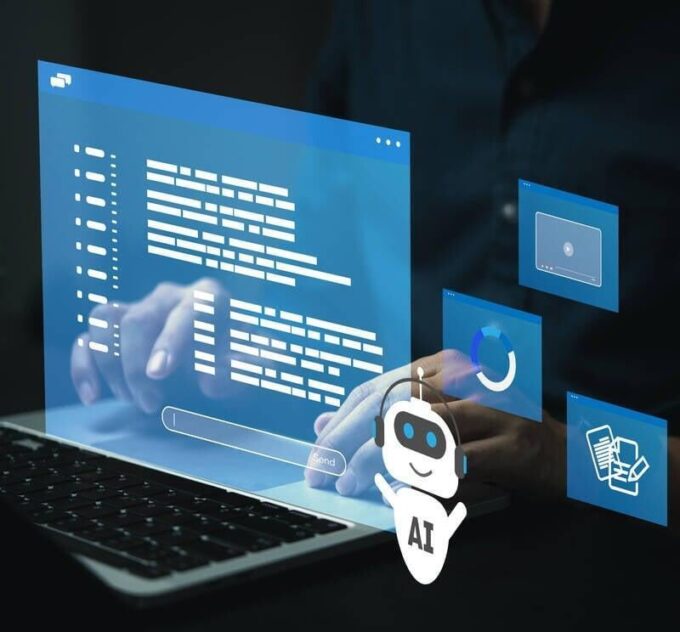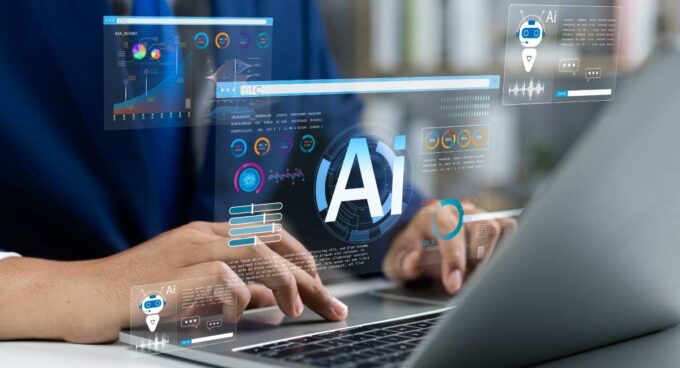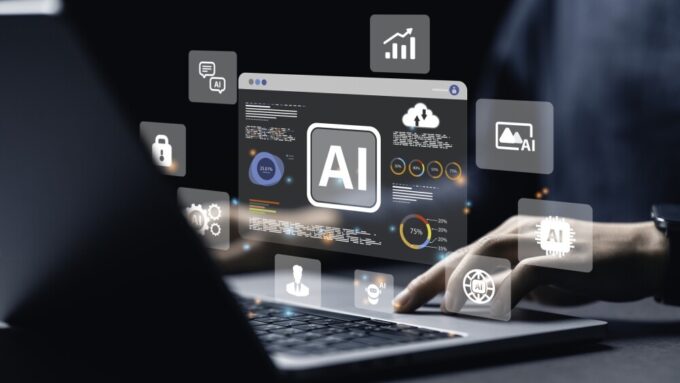In 2025, cybersecurity feels less like a static defense system and more like a constant game of speed chess. Attackers are quicker, infrastructure is more distributed, and remote teams leave doors open everywhere.
For companies, the problem is no longer whether a breach attempt will happen—it’s how fast they’ll notice and respond. Artificial intelligence steps in at this exact gap, acting as an amplifier for human teams.
By analyzing huge volumes of data in real time, AI doesn’t just reduce the window of exposure, it also helps sort the chaos.
For executives, that means fewer sleepless nights staring at dashboards. For security analysts, it means focusing on the real threats instead of drowning in false alarms.
Businesses are starting to realize that without AI in the mix, they’re effectively playing yesterday’s defense in today’s game.
Smarter detection in practice

Source: universalcreativesolutions.com
One of the biggest shifts AI has brought is how threats are actually spotted. Instead of relying on static signatures or “known bad” lists, AI engines create a baseline of normal behavior and detect deviations.
That can be as subtle as unusual login hours from a regular employee or as drastic as a zero-day exploit slipping into your system.
A good way to see its impact is in detection time: traditional systems might take days to flag something suspicious, while AI tools cut that to minutes.
The challenge is avoiding false positives, which AI can still generate if not tuned correctly.
That’s why the human-in-the-loop model works best: let the AI sift, highlight the weird, and then analysts verify.
Done right, the combination feels less like a game of whack-a-mole and more like an organized triage line that never sleeps.
For those exploring trends and case studies, reading a blog about cybersecurity often provides the clearest view of what peers are facing on the ground.
Relieving alert fatigue
If there’s one universal frustration among security teams, it’s alert overload. Endless logs, constant pings, and a flood of “possible threats” can bury even seasoned analysts.
AI doesn’t just flag anomalies, it ranks them by context and impact. Instead of ten thousand equal red lights, you get a focused shortlist of what matters most.
- Efficiency boost: Analysts can prioritize by business risk, not just technical severity.
- Morale improvement: Less wasted energy chasing dead ends.
- Scalability: Teams handle more incidents without adding headcount.
Think of it as noise-cancelling headphones for your SOC: the background static fades so the real signal stands out. When the difference between catching a breach and missing it comes down to focus, this prioritization is where AI earns its keep.
Automated responses and guardrails
The dream scenario for many organizations is not just faster detection but faster action. AI makes this possible by automating routine containment measures: isolating an endpoint, disabling a compromised account, or blocking malicious traffic before it spreads.
These micro-decisions at machine speed can prevent a minor event from turning into a headline breach.
Still, automation isn’t about unleashing an unsupervised robot. Guardrails are essential.
A misconfigured AI that mistakenly shuts down a production database is its own disaster.
The best approach is layered: let AI handle low-risk, high-frequency events automatically, while escalating complex or business-critical situations to humans.
Over time, trust builds as teams measure success rates and adjust rules. That balance—speed without chaos—is the sweet spot businesses are aiming for in 2025.
Identity intelligence as the new perimeter

Source: pg-p.ctme.caltech.edu
With cloud adoption and hybrid work, identity has replaced the firewall as the real boundary line. Attackers know this, which is why stolen credentials are gold.
AI systems monitor behavior across accounts, spotting when something doesn’t add up—like a sudden privilege escalation or logins from two countries within minutes.
| Identity Issue | AI’s Advantage |
| Credential theft | Detects unusual logins and patterns |
| Privilege misuse | Flags abnormal role or access changes |
| Machine accounts | Continuously validates non-human IDs |
This table shows the shift clearly: where once we relied on passwords alone, AI now looks at patterns and behaviors.
Treating identity as a living, monitored perimeter helps companies stay one step ahead of attackers who no longer bother breaking in through the “front door.”
Challenges you can’t ignore
It’s tempting to view AI as a silver bullet, but seasoned teams know the pitfalls. Data quality remains the first hurdle—feed an algorithm flawed or biased inputs, and you’ll get flawed outputs.
Adversarial attacks against AI models themselves are rising too, with attackers intentionally trying to trick detection systems.
Another issue is “shadow AI,” where employees spin up unsanctioned tools without security oversight.
That creates blind spots your team doesn’t even know to defend. And then there’s overreliance: treating AI as infallible can lead to complacency.
Regulations in sectors like finance and healthcare also require explainability, which many AI systems still lack.
Did you know? Analysts estimate that nearly half of organizations using AI in security still struggle with explaining AI-driven alerts to regulators.
AI amplifies defenses, but without governance, it can also amplify mistakes.
The road ahead

Source: police1.com
Looking forward, the frontier is widening. We’ll see collaborative “swarms” of AI agents coordinating to stop attacks in real time, AI systems built to defend other AI pipelines, and stronger integration with quantum-resistant encryption.
Perhaps the most intriguing development is the rise of hybrid security fabrics, where human and machine identities are treated under the same governance model.
For businesses, the takeaway is simple: AI is no longer optional. It’s the accelerant that makes security agile enough to match modern threats.
The smartest path is to start small, measure results, and scale responsibly.
Treat AI as a partner, not a savior, and it will earn its keep. In a world where attackers are automating too, scalable thinking isn’t just strategy—it’s survival.



